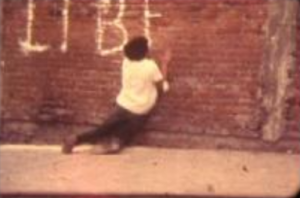
"El relato iniciaba con la presentación de un grupo de jóvenes que corren de manera desesperada por las calles de la ciudad, presumiblemente perseguidos por la policía. Inexplicablemente, dada la urgencia de la huída, uno se detiene a escribir en una barda la palabra "Libertad". No lo consigue, porque una bala lo derrumba cuando apenas va en "Libe...". (de ahí el título de la película). [...] La película apenas muestra una esperanza posible en la lucha por la libertad. Después del acoso y el acecho, todos los jóvenes que han protagonizado la historia mueren por una bala anónima de una fuerza represiva que no alcanza a tener un rostro definido" (Vázquez Mantecón, 2012).
"The story began with the presentation of a group of young people that run desperately throughout the city streets, presumably they are being chased by the police. Inexplicably, given the urgency of the escape, one of them stops to write the word "Freedom" on a wall. He fails, because a bullet overthrows him when he has barely written "Freed.." (hence the title of the film). [...] The film barely shows hope for the struggle for freedom. After the harassment and the siege, all the young people that starred the film are murdered by an anonymous bullet of a repressive force that does not have a defined face" (Vázquez Mantecón, 2012).
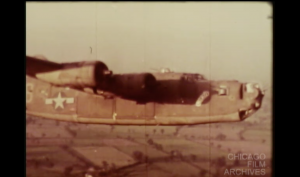
"A short combat film documenting WWII allied forces "liberation over Europe." The film begins in Wesel, Germany March 24, 1945, followed by aerial shots of war-torn countries. The film ends with a non fatal crash landing followed by allied forces drinking coffee." Chicago Film Archives
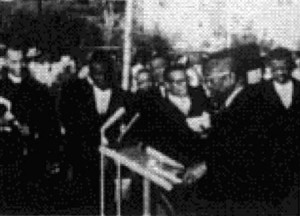
"A free and independent country with a form of government patterned after the U.S.A. located on the western part of Africa. Monrovia, its capital city, is modern and has an air of prosperity. There is an active program of new schools, improved teaching, road construction, agricultural development, and training of its defense army. Away from the city, the country is still a land of thatched roofs and scanty clothing, ritual and tribal dances. A fine documentary that tells us also of the economic growth of the country" PSA Journal, Oct. 1962, 33.
"The saltwater lido at Grange-over-Sands, overlooking Morecambe Bay, is a pleasant place to pass the time, even for non-swimmers, in this short film shot in the pool's early days. Plenty of people do take to the water, though, swimming and splashing in the sunshine and fresh air, in keeping with the 1930s vogue for health and fitness. The lido's design is very 1930s too, showcasing Art Deco style." (BFI Player)
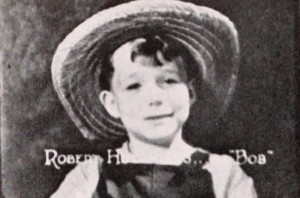
"'Life,' by H. B. Hutchings, given the highest recognition for Home Movies, is the sort of picture that the 16mm camera was made for. It is a day in his son's life and contains many effects which were undoubtedly secured with one of the more modern cameras." American Cinematographer, Dec. 1933, 321, 342.
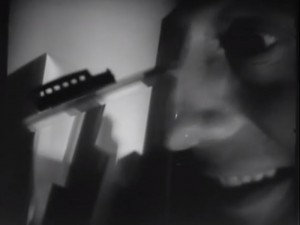
"Robert Florey and Slavko Vorkapich created one of the most creative (particularly in light of its reputed $97 budget) and bleakest of the early avant-garde films. Photographed by Gregg Toland, who would become best known for his work on "Citizen Kane," the film is the time-worn tale of a movie extra (Jules Raucort) marginalized by one casting director after another until he's seen only as a number symbolically appearing on his forehead. The ultra simplistic sets and props, made of toys and cardboard buildings projected like shadows, help to create intricate German Expressionistic cityscapes reminiscent at times of "Metropolis." " National Film Registry.
Life at Deep Cove "shows family leisure activities, 1937 Deep Cove Regatta; colour section of sunbathing and Deep Cove scenes" British Columbia Archives.
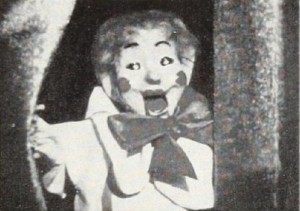
"The construction and performance of marionettes are skillfully pictured in Life Hangs By A Thread, by Paul R. Elliott and Joseph Dephoure. Aided by skillful lighting, a fine sound track perfectly harmonized with the action and an intelligent script, interest is closely held from the time a marionette is a lump of putty to its moments of glory when, in the hands of an experienced operator, it seems to take on a life of its own. Perhaps the most impressive thing about Life Hangs By A Thread is its careful step by step planning, indicating the sound belief by its producers that a movie should tell as much as possible pictorially, with the commentary used only to enhance the visual appeal." Movie Makers, Dec. 1948, 475-476.
"Film features two stories: The Fly - in which a man, who is reading a book, is bothered by a fly; and The Phone - in which a woman, who is painting and then taking a bath, is bothered by a ringing phone" Archives of Ontario.
Total Pages: 203